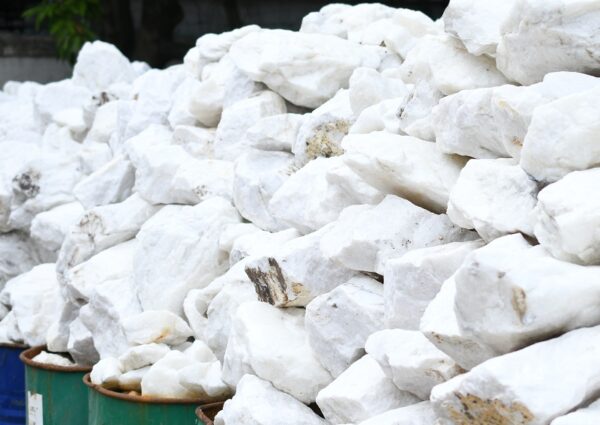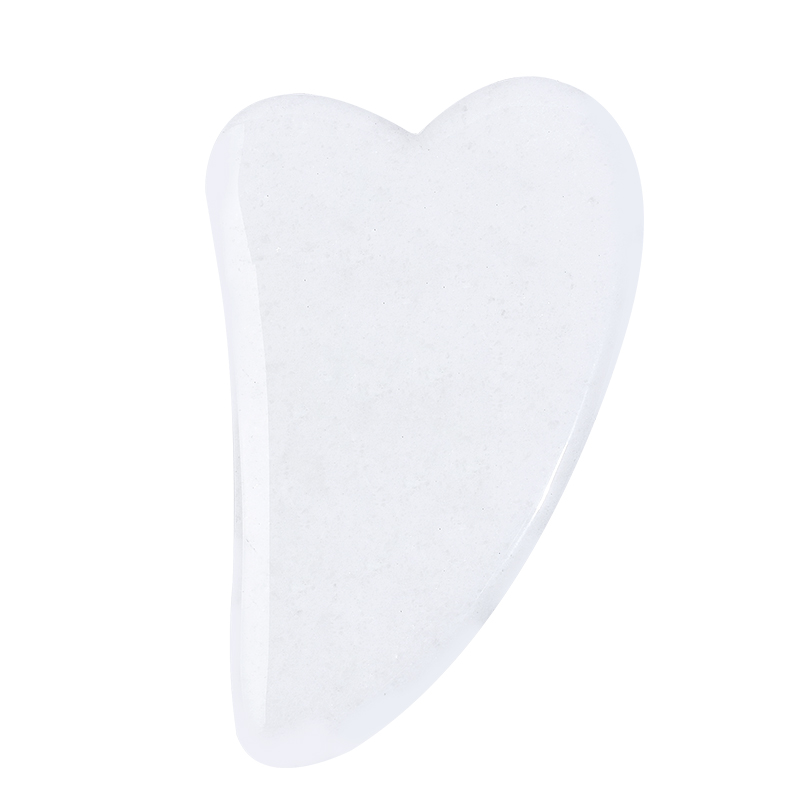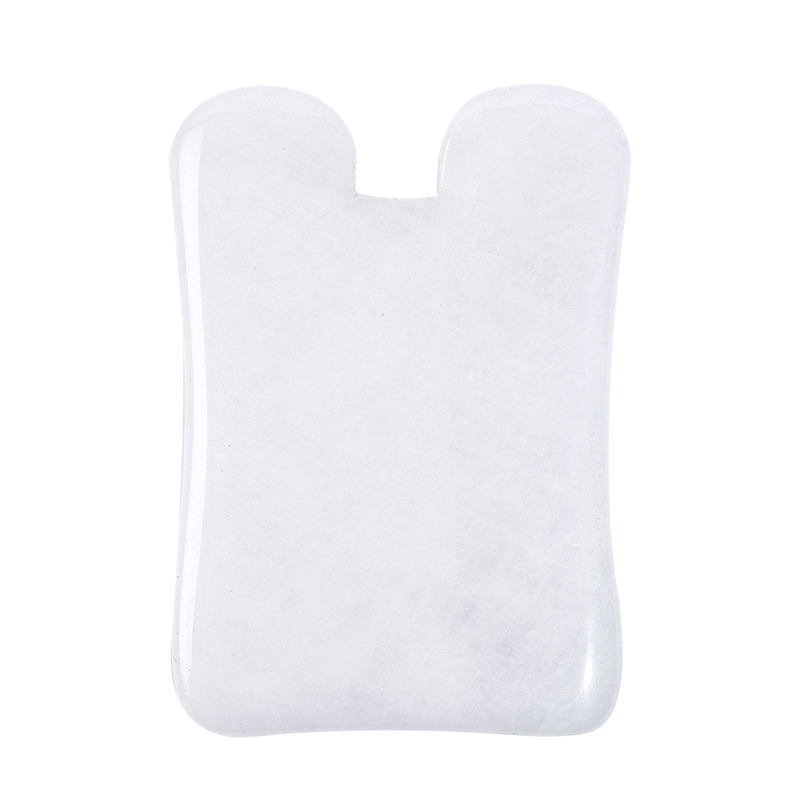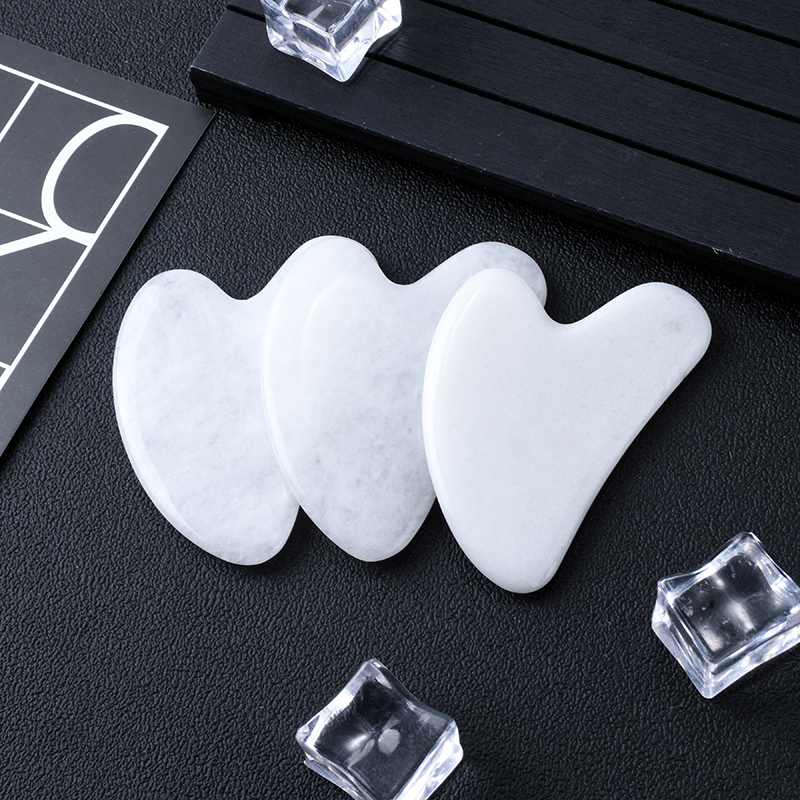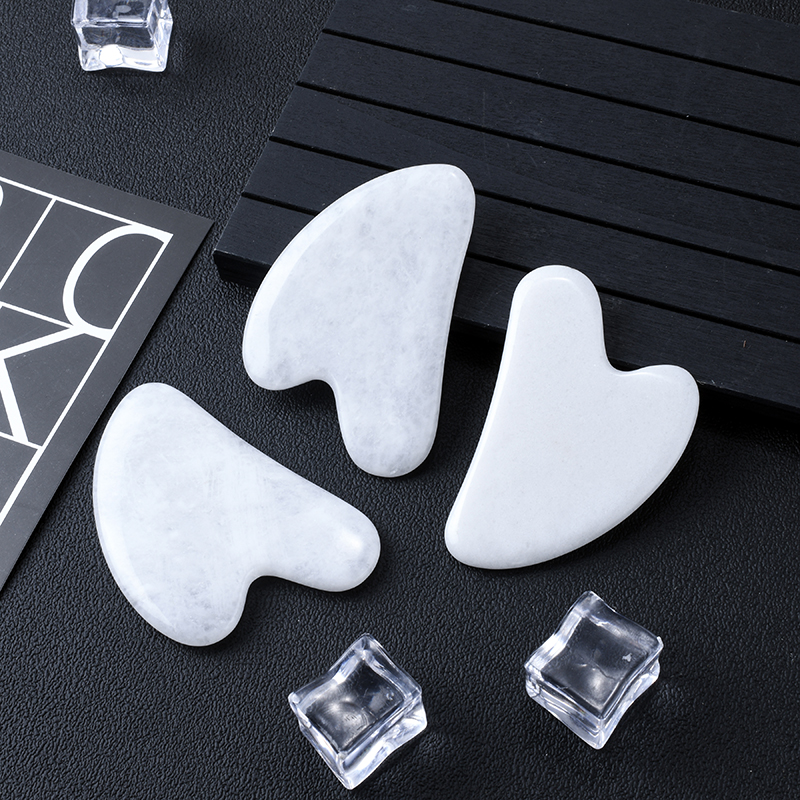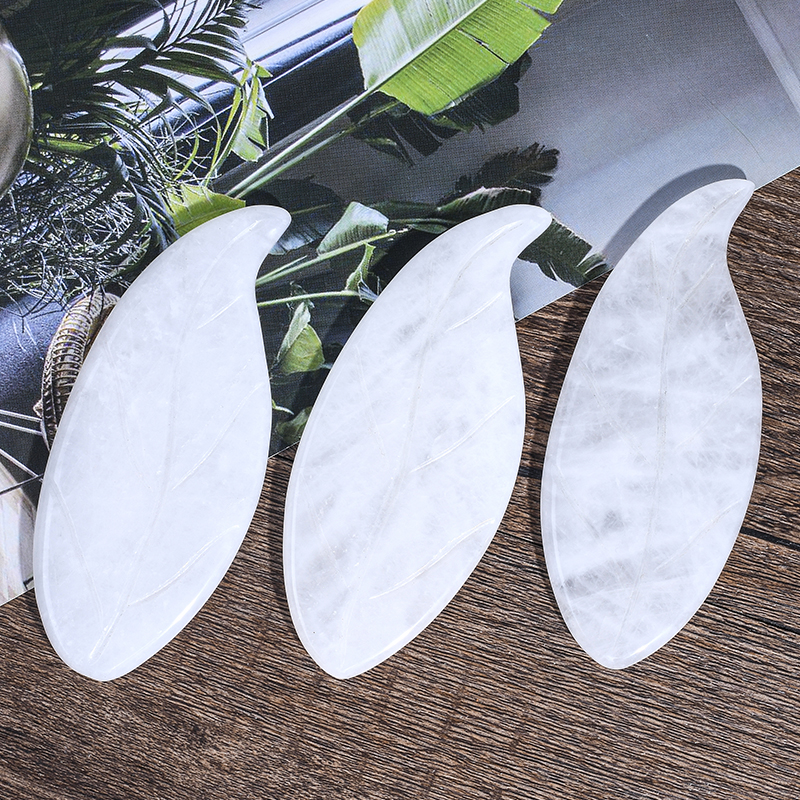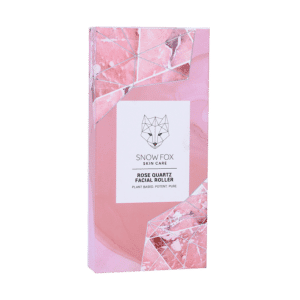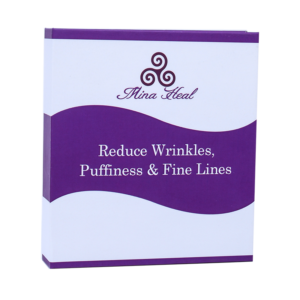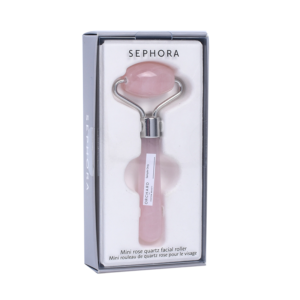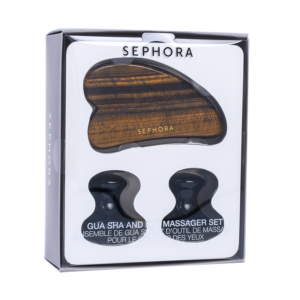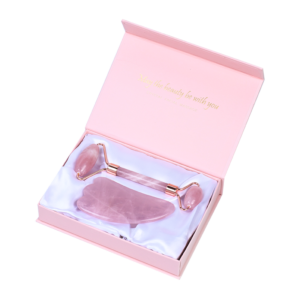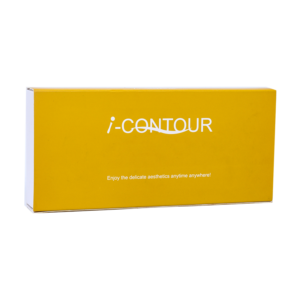About White Jade Gua Sha
Also called nephrite, Chinese jade, white jade has a fatty white color and good oiliness. The best white jade comes from Hetian jade in Xinjiang. Hetian jade has a fine texture and is also known as sheep’s-fat jade. Sheep’s-fat jade is among the finest varieties of white jade. White jade is usually distinguished between naturally occurring jade and jade mined from deposits. Naturally occurring jade is the result of primary ore that has been weathered or relocated and nudged by trillions of years of crustal movement to the riverbed, and then subjected to millennia of sharpening, collision, and washing, and finally cast into a smooth-looking precious jade. The inorganic, organic and various mineral elements in the river water sharpen the impact and over time leave imprints in the fine voids of the white jade epidermis, which is the epidermis of the seed material – rust spots.
Jade mined from deposits is white jade from primary ore or buried in rock, usually in irregular blocks, with a less delicate texture than seed material and more fissures. White jade is characterized by its whiteness, and is subdivided into: lamb’s-fat white, ivory white, gray white, etc.
